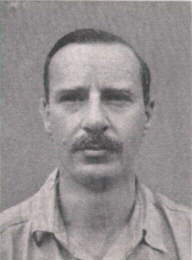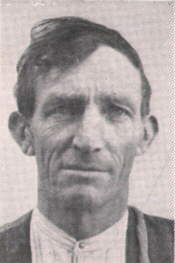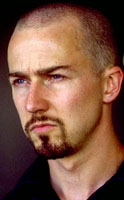    Etymology: In the course of their migrations throughout Europe and elsewhere, the Celtic peoples brought with them a conglomeration of physical types, among which this special Nordid variety seems to have been particularly numerous. Carleton Coon consequently chose the term “Keltic” for the present-day equivalent type. We have retained the archaic spelling with K, considering its great proliferation.
- Iron Age Nordic (used by Coon as an alternative to Keltic Nordic, but also to denote any Iron Age central European Nordid)
The Keltic Nordid type probably shares its earliest formative history with the Hallstatt variety, or a similar proto-strain (for some brief speculation on the topic of Nordid origins, go here). The migratory existence associated with the ancestry of the Keltic type clearly involved the absorption of several non-Nordid strains, most importantly central European Dinarid (probably by association with the Bell-Beaker culture of the Neolithic and Bronze Ages). In this respect, one might say it is intermediate between the Hallstatt and Norid types. Additionally, the Keltic Nordid has mixed with Atlanto-Mediterranid (cf. North-Atlantid), the latter of which is probably present at a low level in the Keltic Nordid population as a whole.
The modern Keltic Nordid type is tall, slender, and moderately broad-shouldered. The head form is typically mesocephalic, with a mean cephalic index of 79, which is slightly higher than the present Hallstatt mean. Nordids of this type are particularly low-vaulted, with foreheads of much greater slope than those of the Hallstatt type, recalling a more typically Dinarid feature. The vault, when in posterior view, gives a characteristically cylindrical impression, as opposed to the more nearly rhomboid or rectangular vault shape of the Hallstatt variety. The Keltic face is relatively long and narrow, and the chin is moderately to strongly developed. The temples, malars, and gonial angles are typically compressed, and not visible. The Keltic nose is long, large and high-bridged, characteristically prominent, and narrow to medium in breadth. The profile is usually straight, but wavy or concavo-convex (dinariform) profiles are not uncommon. A particularly convex-nosed and Dinaroid tendency is associated with certain British urban areas. The lips are thin to medium, and little everted. The hair, which ranges in color from a blackish brown to a platinum-like ash-blond, is most commonly medium brown in pigment. It is generally of a much darker tone than what is common among Hallstatt Nordids, a fact well illustrated by some the more recent photographic material presented below. The eyes are predominantly light-mixed.
Modern Keltic Nordid populations are for the most part descended from Celtic and Frankish tribes on the northwestern European mainland and on the Isles across the British Channel. The type is concentrated in the British Isles and in the Be-Ne-Lux nations, and an old Keltic enclave in the Swiss Alps forms a secondary center. Elsewhere, the Keltic Nordid type has found breeding ground overseas in North America, down under in Australia, and in South Africa, and it still figures as the predominant Europid racial type in most extra-European British and Dutch former colonies.
- Aran type
- Hallstatt Nordid |





